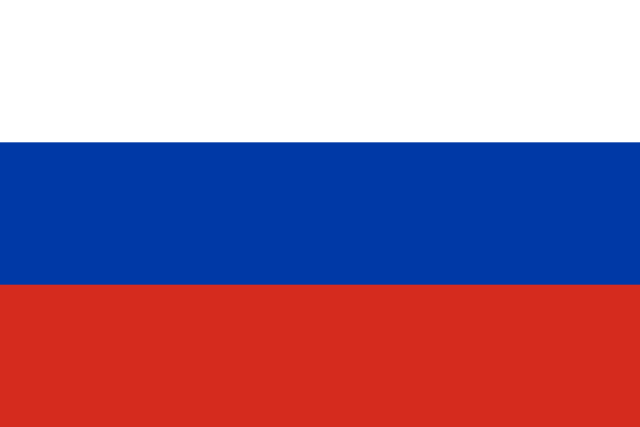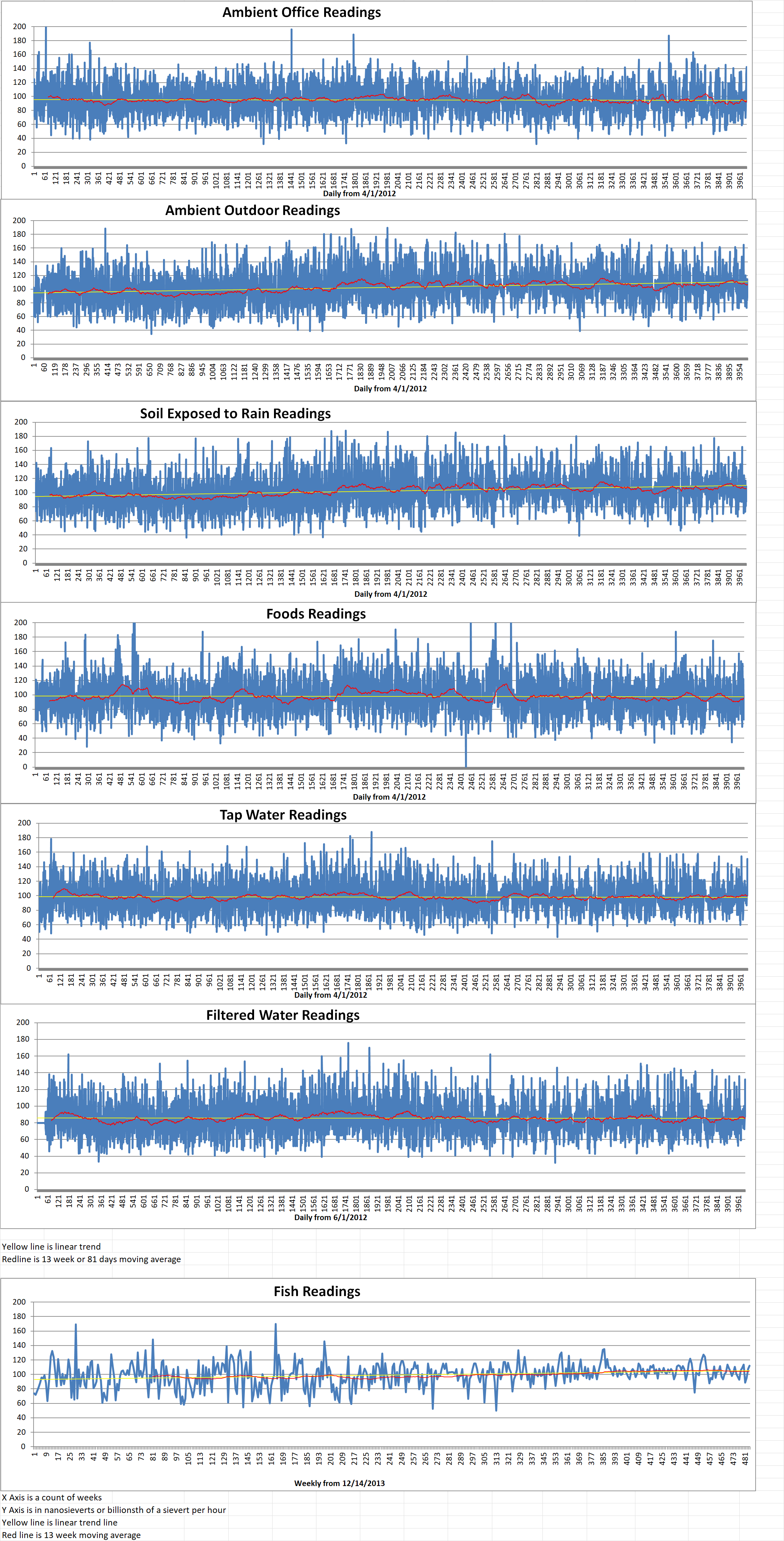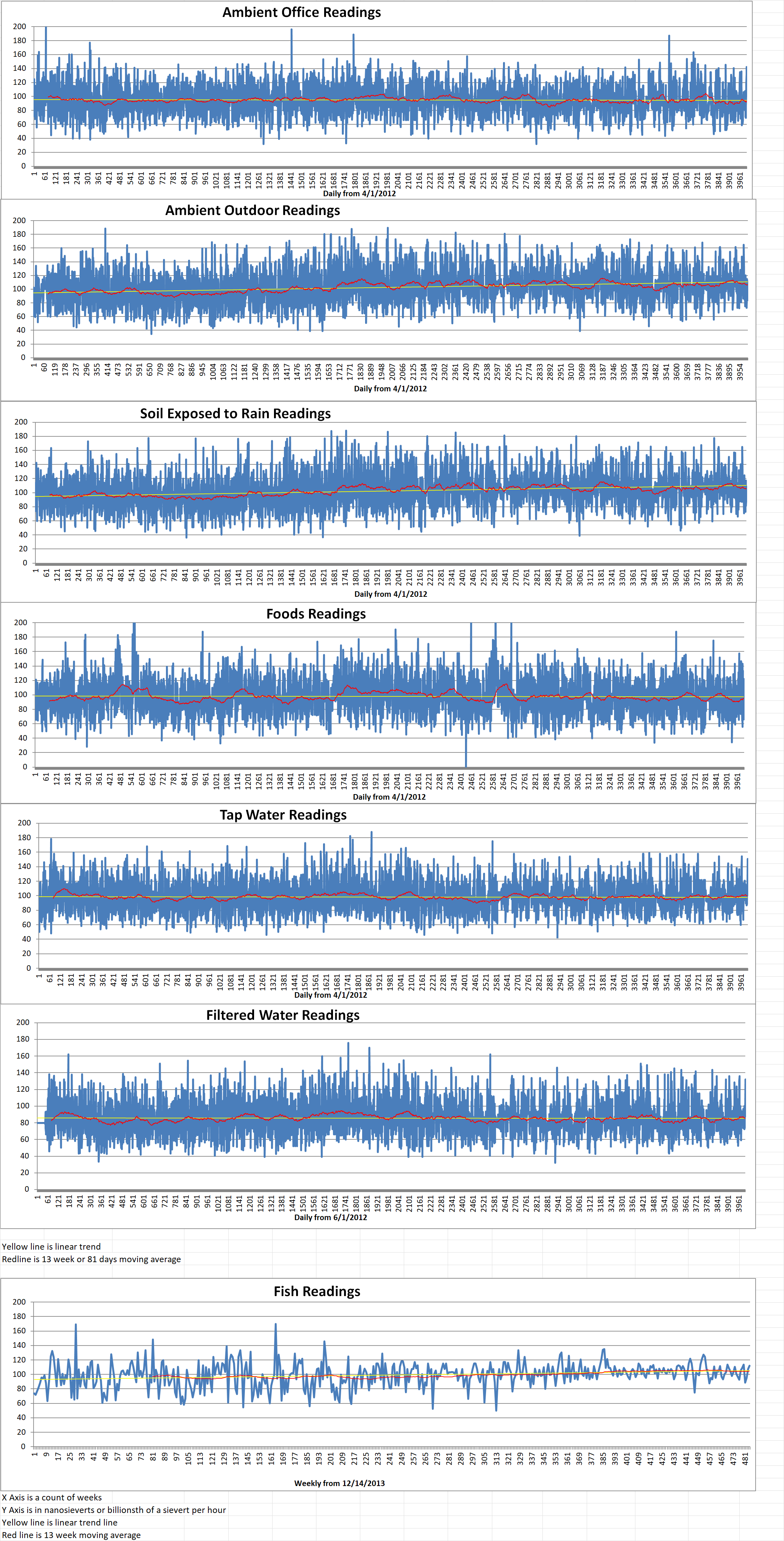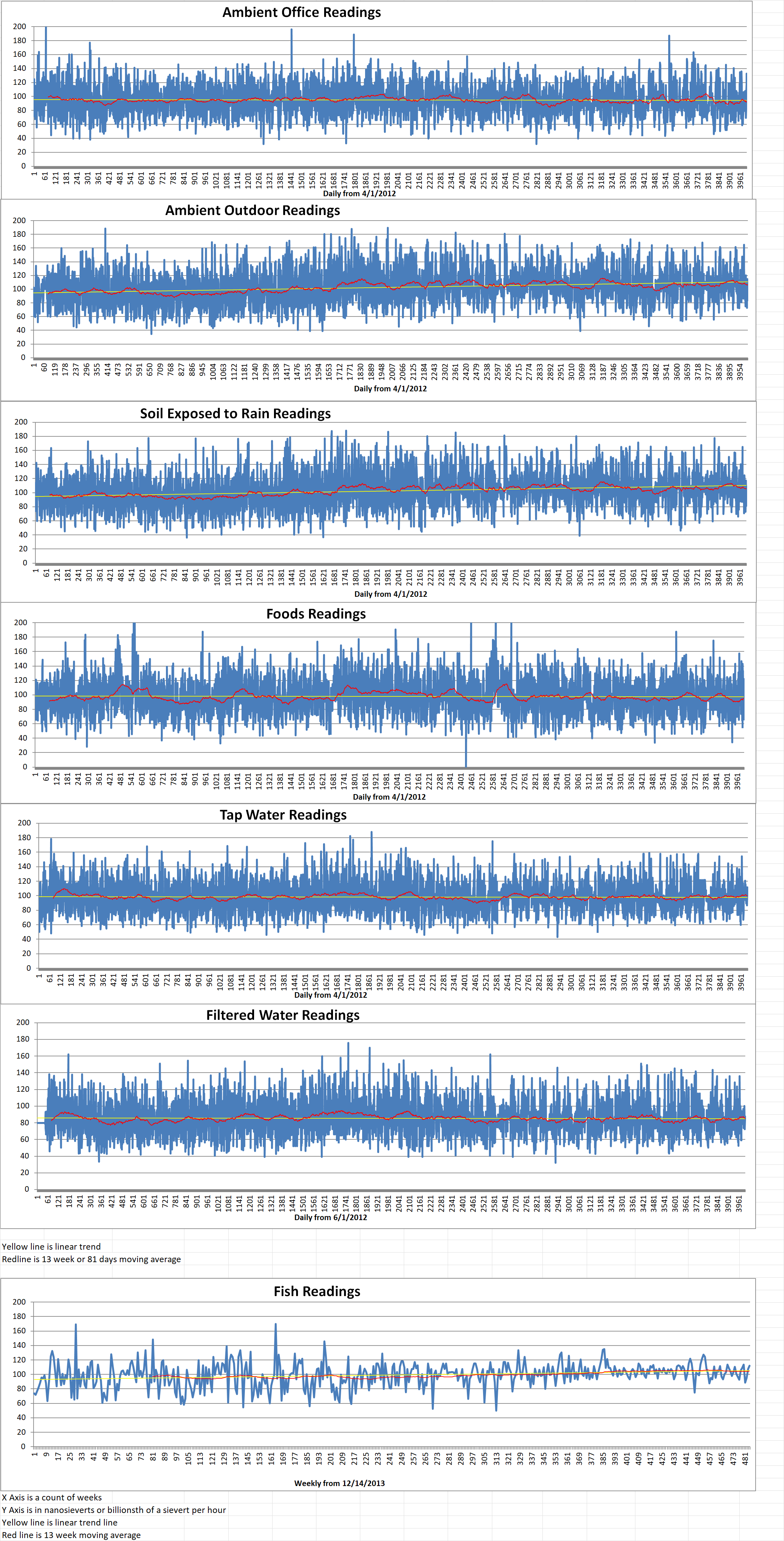Blog
-

Geiger Readings for June 13, 2023
Ambient office = 89 nanosieverts per hour
Ambient outside = 91 nanosieverts per hour
Soil exposed to rain water = 81 nanosieverts per hour
Tomato from Central Market = 122 nanosieverts per hour
Tap water = 92 nanosieverts per hour
Filter water = 84 nanosieverts per hour
-

Nuclear Weapons 820 – Russia Threatens Other Nations About Use Of Tactical Nuclear Weapons in Ukraine
Russia has repeated threated the use of nuclear weapons against the United States and other Western nations such as members of the European Union. Russia has sent their nuclear weapon equipped planes into other nations airspaces without permission and sailed its nuclear armed ships and submarines though other nations coastal waters without permission. However, with the advent of the Russian invasion of Ukraine, their threatening rhetoric has increases steadily.
A Russian state TV host recently issued a warning that if the Ukraine war escalates to a “nuclear phase” then Russia will strike the U.S. with strategic nuclear weapons. Yevgeny Satanovsky is a Russian political commentator and president of Russia’s Institute of the Middle East. He issued the warning in a video clip that has gone viral.
Anton Gerashchenko is an adviser to the Ukrainian Internal Affairs Ministry. He shared the Satanovsky clip on his Twitter page on June 12th. The video was translated by Gerashchenko and has been viewed more than one hundred thousand times.
On June 9th, Russian President Vladimir Putin that he would begin deploying tactical nuclear weapons in Belarus on July 8th. This was just days before a NATO summit was set to be held in Lithuania which borders Russia.
Satanovsky made a statement on Russian TV. He said, “The question is, will it all reach the nuclear phase or not? Because if it keeps going like this, it will definitely happen. And it won’t be tactical [but strategic] nuclear weapons that we’ll be striking at Ukraine, believe me, the United States of America, and all the targets that need to be in the crosshairs. They have been there since Soviet times and those in the U.S., and those in Europe, and those in other places where American nuclear weapons are concentrated, where there are American military bases. “So, I wish that on the way to the nuclear phase we could finish off the enemy without crossing the Rubicon. But if we have to, what can we do?”
Since Russia invaded Ukraine in February 2022, Russian commentators and officials have stated that Russia was prepared to use nuclear weapons in the conflict. In April of this year, Dmitry Medvedev, the former Russian president, said that the probability of nuclear weapons being used was growing by the day. He said that nuclear weapons were the “backbone that holds the state together.” Medvedev was Putin’s stand in President between 2008 and 2012. He now serves as deputy of Russia’s Security Council and has issued nuclear threats frequently.
Medvedev attended an educational event in late April at which he said, “In my opinion, [concerns about climate change] is nothing compared to the prospect of being at the epicenter of an explosion with a temperature of 5,000 Kelvin (scale), a shock wave of 350 meters per second and a pressure of 3,000 kilograms per square meter, with penetrating radiation, that is, ionizing radiation and an electromagnetic pulse. Is there such a prospect today? (Unfortunately), yes. And it is growing every day for well-known reasons.” Previously, in January, he said in a post discussing NATO support for Ukraine’s military, “Defeat of a nuclear power in a conventional war may trigger a nuclear war.” -
Nuclear News Roundup June 12, 2023
Russia Names Condition for Returning to Nuclear Pact With U.S. newsweek.com
Operating permit issued for Chinese molten salt reactor world-nuclear-news.org
IAEA taking measures to ensure Ukraine nuclear plant security jpost.com
Centrus HALEU plant receives regulatory clearance world-nuclear-news.org
-

Geiger Readings for June 12, 2023
Ambient office = 93 nanosieverts per hour
Ambient office = 93 nanosieverts per hour
Ambient outside = 114 nanosieverts per hour
Soil exposed to rain water = 105 nanosieverts per hour
Tomato from Central Market = 66 nanosieverts per hour
Tap water = 133 nanosieverts per hour
Filter water = 120 nanosieverts per hour
-
Nuclear News Roundup June 11, 2023
Nuclear bomb fears are a false ‘excuse’: Iran’s Khamenei Aljazeera.com
France’s EDF frustrated with nuclear power’s status in EU’s Net-Zero Industry Act euractiv.com
Nuclearelectrica and partners sign MoU for NuScale plants world-nuclear-news.org
NATO: No change in nuclear posture over Russian nukes in Belarus upi-com
-

Geiger Readings for June 11, 2023
Ambient office = 142 nanosieverts per hour
Ambient outside = 95 nanosieverts per hour
Soil exposed to rain water = 88 nanosieverts per hour
Serano pepper from Central Market = 100 nanosieverts per hour
Tap water = 151 nanosieverts per hour
Filter water = 132 nanosieverts per hour
-
Nuclear News Roundup June 10, 2023
Bibi says U.S. and Iran held indirect talks on “mini agreement” axios.com
Westinghouse Strengthens Nuclear Safety in Ukraine with Advanced Cooling System Upgrades at Energoatom’s VVER-440 Reactors westinghousenuclear.com
The US Energy Department is spending $26M to help find a temporary site to store spent nuclear fuel federalnewsnetwork.com
UN concerned by ‘discrepancy’ in Ukraine nuclear plant water levels after dam collapse theguardian.com
-

Geiger Readings for June 10, 2023
Ambient office = 133 nanosieverts per hour
Ambient outside = 111 nanosieverts per hour
Soil exposed to rain water = 109 nanosieverts per hour
Roma tomato from Central Market = 66 nanosieverts per hour
Tap water = 100 nanosieverts per hour
Filter water = 87 nanosieverts per hour
Dover Sole from Central = 112 nanosieverts per hour
-

Nuclear Reactors 1234 – Current Small Modular Reactors Plans – Part 3 of 3 Parts
Part 3 of 3 Parts (Please read Parts 1 and 2 first)
Westinghouse is bullish enough on the SMR technology that it has announced plans to build a series of SMRs called AP300s. According to Reuters, the company “has had informal talks with parties in neighboring states Ohio and West Virginia about the potential building of AP300s at former coal plants.”
Romania intends to be the first nation in Europe to deploy an SMR. NuScale has now opened a simulator there in preparation.This is not a comprehensive list of every SMR proposal in the world. It is just a partial list to illustrate the current state of SMR development. SMR support is increasingly bipartisan. Senator Mark Warner, D-Virginia, is the chairman of the Senate Select Committee on Intelligence and Senator Marco Rubio, R-Florida, is the vice chairman. They recently held a roundtable discussion on SMRs. It is interesting to note that this discussion was triggered by national security concerns and not purely energy concerns. In a joint statement, the two Senators said, “China and Russia have recognized the potential of nuclear power and are investing heavily in their advanced reactors, while attempting to secure nuclear contracts all over the world. The United States must not let our adversaries monopolize the growing civil nuclear industry, set the safety standards around nuclear power, dominate the supply chains for such a critical source of energy, and/or attempt to use advanced reactor contracts to exert undue geopolitical and economic leverage.”
Not everyone is enthusiastic about SMRs. In Canada, Prime Minister Justin Trudeau’s Liberal Party government has helped fund the construction of the SMR that is underway in Ontario. However, he has also been criticized by those in his party for his support of nuclear power. The Toronto Star recently reported on some of the critic’s comments. Elizabeth May is the Green Party leader and a member of Parliament. She said, “It’s not based on evidence.” “Steven Guilbeault is the Canadian Environment Minister and a former environmental activist. He acknowledged that “he was opposed to nuclear energy but now believes it is needed to keep global warming to as close as possible to 1.5 C above pre-industrial temperatures.”
The debates in Canada are more advanced than such debates in the U.S. but mirror what will probably take place in the U.S. soon. One side says that the country needs more electricity and that nuclear power is the only way to produce it while the country is trying to reduce carbon emissions. They say that SMRs will be cheaper than conventional nuclear power plants. The other side says that nuclear power is far to expensive and far to dangerous. They add that SMRs in a commercial setting are unproven technology.
In Canada, the political momentum for SMRs is driven by a left-of-center government at the national level and right of center governments in some provinces. Alberta recently began formal explorations into SMRs and Saskatchewan has already selected two potential sites for an SMR. It may make a formal decision on one of them by the end of this year.
